Knowledge graphs have emerged as a powerful solution to address these issues. A knowledge graph integrates data from diverse sources into a unified, structured, and interconnected representation, offering a broader view of information.
By doing so, knowledge graphs streamline data governance and unlock numerous benefits and use cases across various domains.
What is a knowledge graph?
Figure 1. A simple knowledge graph representation
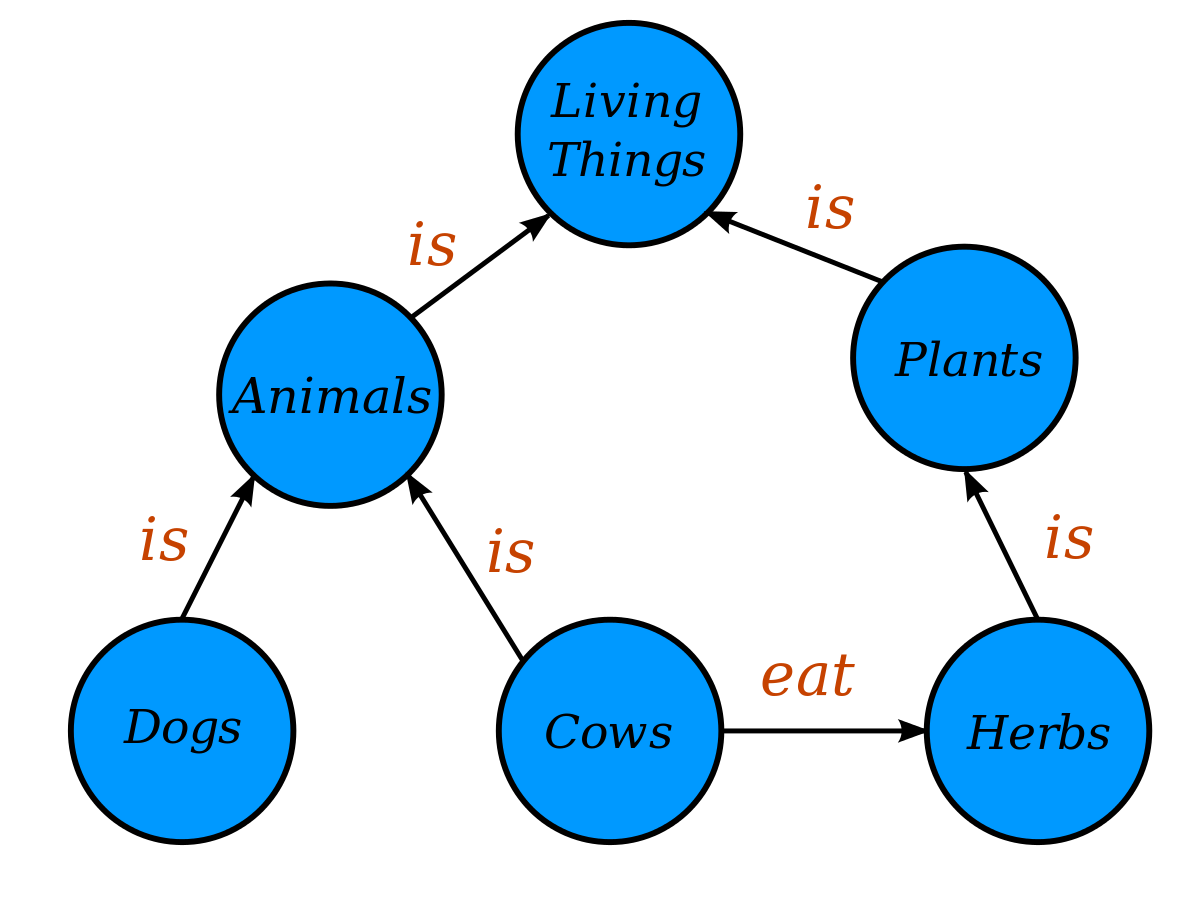
Source: Wikipedia
A knowledge graph is a structured representation of information and knowledge in the form of a graph. It consists of nodes (real world entities or concepts) connected by edges (relationships or associations).
The purpose of a knowledge graph is to model, store, and organize complex information in a way that makes it easy for both humans and machines to understand, navigate, and use the knowledge it contains.
Powered by machine learning algorithms, knowledge graphs employ natural language processing (NLP) to create an extensive representation of nodes, edges, and labels via a technique known as semantic enrichment. As data is ingested, this method enables knowledge graphs to recognize distinct entities and comprehend the connections between various entities.
How does a knowledge graph work?
Figure 2. Steps involved in the construction of a knowledge graph
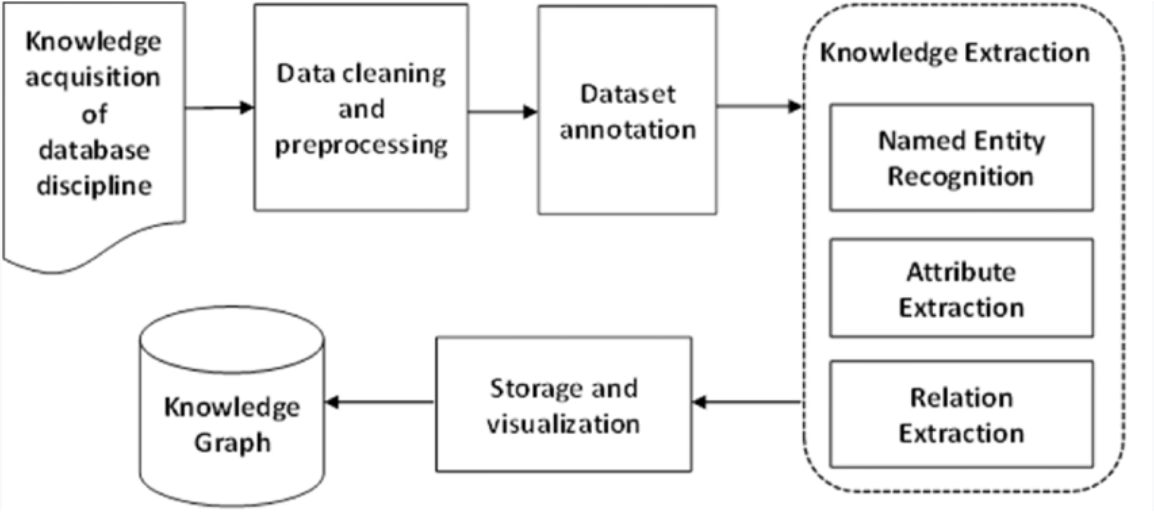
Source: ResearchGate
Creating a knowledge graph involves several steps that help in organizing and representing the information effectively:
- Data collection: Gathering the underlying data from various sources like databases, websites, or documents.
- Entity identification: Recognizing and distinguishing entities (people, places, etc.) in the collected data model.
- Relationship extraction: Determining the connections between the identified entities.
- Ontology creation: Developing a well-defined structure (ontology) to organize the entities and their relationships.
- Data storage: Storing the knowledge graph in a specialized database designed for handling graph data.
- Querying: Using graph query languages to search, navigate, and explore the connections in the network.
- Inference: Performing advanced tasks like discovering new relationships or identifying inconsistencies within the graph.
Benefits of Knowledge Graphs
- Enhanced Data Integration: Knowledge graphs can integrate diverse data sources, both structured and unstructured, into a unified view. This integration allows for richer insights and better decision-making since all relevant data points are interconnected.
- Improved Search and Discovery: By understanding the relationships between entities, knowledge graphs enable more accurate and context-aware search results. Users can find information not only based on keywords but also based on the relationships between different concepts.
- Semantic Understanding: Knowledge graphs add a layer of semantic understanding to data, enabling systems to interpret the meaning of the data rather than just its format. This semantic understanding is crucial for tasks such as natural language processing, where the context of words plays a significant role.
- Facilitation of Complex Queries: Traditional databases often struggle with complex queries that involve multiple relationships between entities. Knowledge graphs, with their graph-based structure, are naturally suited to handle such queries efficiently.
- Real-Time Decision-Making: Knowledge graphs can support real-time analytics by allowing organizations to make connections between various data points quickly. This is particularly useful in domains like finance and healthcare, where timely decisions are critical.
- Interoperability and Reusability: Knowledge graphs promote interoperability across systems by providing a standard framework for representing data. This makes it easier to reuse and share data across different applications and platforms.
Use Cases of Knowledge Graphs
- Search Engines and Information Retrieval:
- One of the most well-known applications of knowledge graphs is in search engines. Google’s Knowledge Graph, for example, enhances search results by providing users with direct answers and context around their queries rather than just a list of links. This is achieved by understanding the relationships between various entities, including people, places, and things.
- Recommendation Systems:
- Knowledge graphs are utilized in recommendation systems to deliver more personalized and relevant recommendations. For example, in e-commerce, a knowledge graph can connect products with user preferences, purchase history, and other users’ behaviors to recommend items that a customer is likely to buy.
For more information, check out our article on recommendation systems.
- Healthcare and Biomedical Research:
- In healthcare, knowledge graphs can integrate patient data, medical research, and clinical guidelines to provide a comprehensive view of a patient’s health. This integration can help in identifying potential diagnoses, suggesting treatments, and predicting health outcomes. For instance, a knowledge graph might connect symptoms, diseases, and treatment protocols, allowing doctors to make informed decisions.
- Enterprise Knowledge Management:
- Organizations utilize knowledge graphs to manage and organize their extensive internal data, including documents, employee expertise, and project information. This facilitates knowledge discovery, enabling employees to easily locate and utilize relevant information throughout the organization. For example, a company might utilize a knowledge graph to map the relationships between various projects, departments, and skills, thereby optimizing resource allocation.
- Natural Language Processing (NLP):
- Knowledge graphs enhance NLP applications by providing context and understanding relationships between words. For instance, in chatbots and virtual assistants, knowledge graphs enable the system to understand user queries in context, thereby improving the accuracy and relevance of responses.
- Knowledge Graphs with Retrieval-Augmented Generation (RAG)
- Knowledge Graphs enhance the ability of AI models by combining the structured context of knowledge graphs with the generative capabilities of large language models (LLMs). In RAG applications, knowledge graphs store relationships between entities, allowing more relevant and context-rich information retrieval. This structured data supports the LLM in producing more accurate and insightful outputs by connecting both structured and unstructured data, such as documents, and enhancing search capabilities through advanced techniques like vector similarity search.
By incorporating background knowledge and context from knowledge graphs, NLP models can perform more effectively and accurately across a range of tasks such as:
- Entity recognition
- Relation extraction
- Text summarization
Figure 4. Semantic triples for NLP
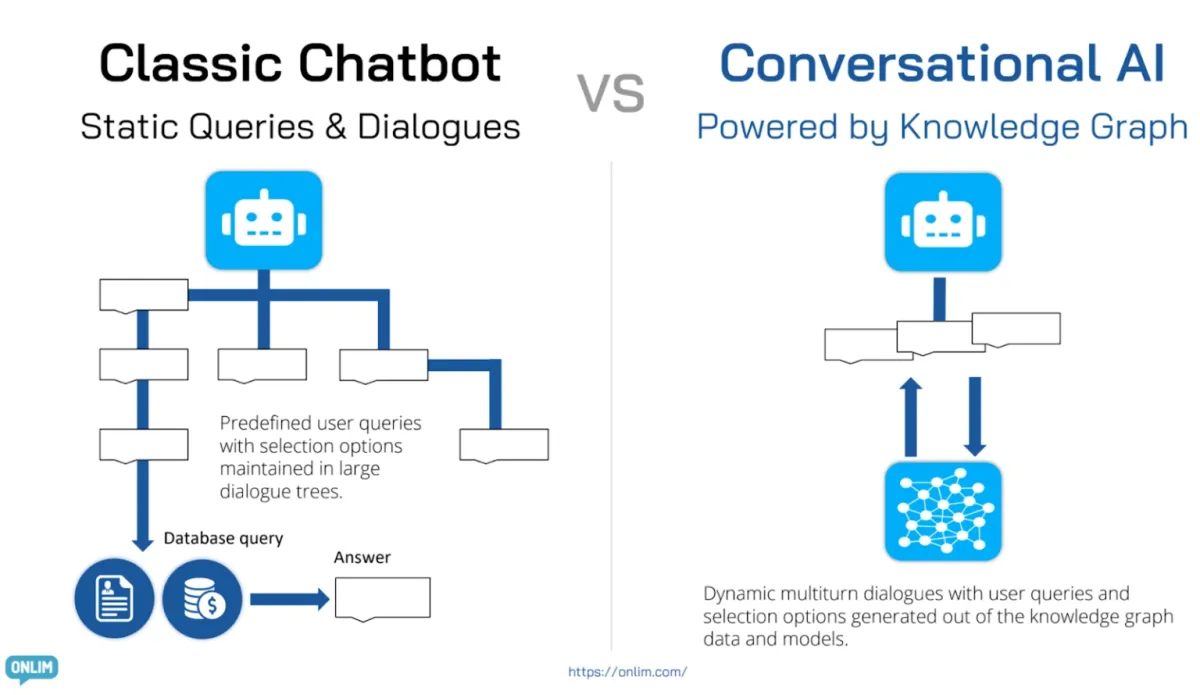
Source: Accenture
6. Fraud Detection:
- Financial institutions utilize knowledge graphs to identify fraudulent activities by mapping and analyzing relationships between entities, including bank accounts, transactions, and individuals.
By analyzing these relationships and patterns in the knowledge graph, it becomes easier to spot potential fraud or security threats, such as:
- Suspicious transactions
- Fake accounts
- Abnormal user behavior
7. Supply Chain Optimization:
- In supply chain management, it can connect data from different stages of the supply chain, from raw materials to finished products. This interconnected view enables companies to optimize logistics, reduce costs, and enhance efficiency by identifying bottlenecks and predicting potential disruptions.
8. Customer Relationship Management (CRM):
- Knowledge graphs in CRM systems connect customer interactions, purchase history, and demographic information, providing a 360-degree view of each customer. This holistic understanding enables better personalization and enhances customer satisfaction.
9. Legal and Compliance Management:
- Law firms and compliance departments use knowledge graphs to manage and link legal documents, case law, regulations, and client information. This allows for more efficient legal research, risk assessment, and compliance management by understanding the interconnections between legal entities and concepts.
10. Intelligent Digital Assistants:
- Virtual assistants, such as Siri, Alexa, and Google Assistant, utilize knowledge graphs to comprehend and respond to user queries. By mapping out the relationships between different pieces of information, these systems can provide more accurate and context-aware responses.
Examples of Knowledge Graph Implementations
- Google Knowledge Graph:
- Google’s Knowledge Graph is a vast database that connects billions of facts about people, places, and things. It enhances search results by providing users with summaries, related information, and direct answers to their queries, rather than just a list of web pages.
Figure 6. Google knowledge panel
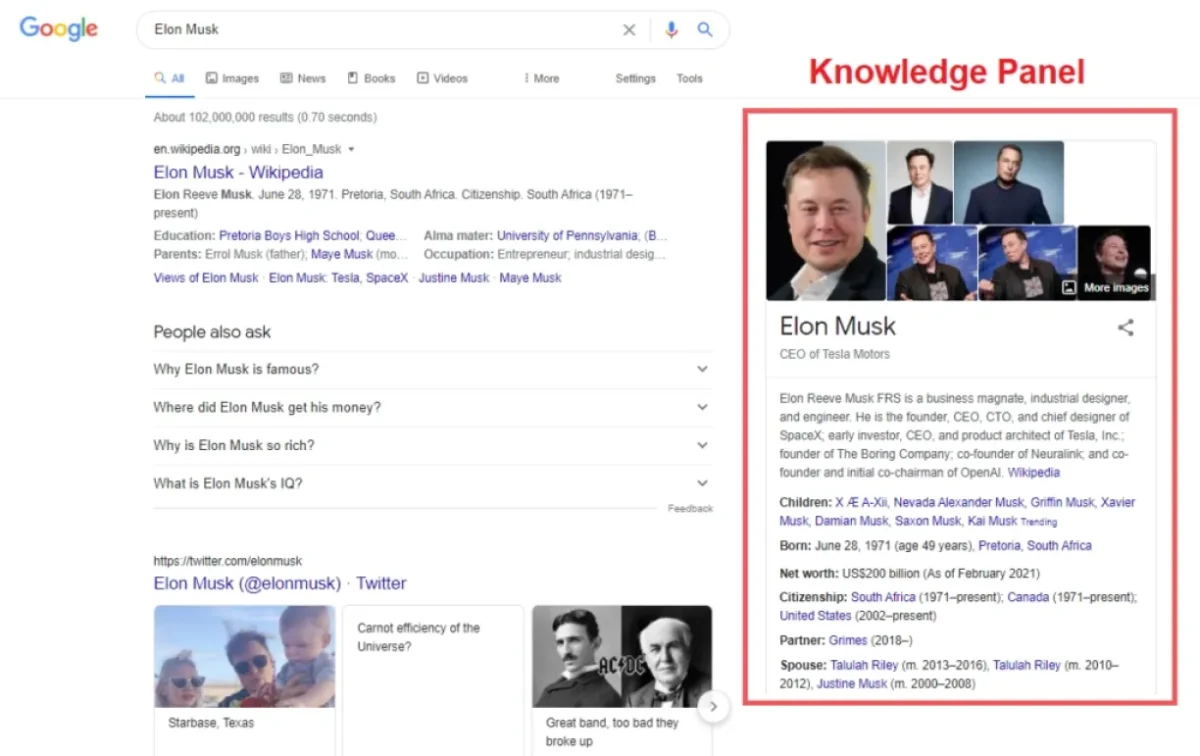
- Facebook’s Social Graph:
- Facebook utilizes a social graph to map the relationships between its users, encompassing friendships, likes, posts, and interactions. This graph helps personalize the user experience by displaying relevant content and advertisements based on connections within the network.
- IBM Watson:
- IBM Watson uses knowledge graphs to enhance its cognitive computing capabilities. For example, in healthcare, Watson’s knowledge graph integrates vast amounts of medical literature, patient records, and clinical trials to provide insights and support decision-making for healthcare professionals.
- Amazon Product Graph:
- Amazon uses a knowledge graph to connect products, customer reviews, and purchasing behaviors. This enables Amazon to offer personalized recommendations and enhance search results, making it easier for customers to find products that align with their interests.
- LinkedIn’s Economic Graph:
- LinkedIn’s Economic Graph maps the relationships between people, jobs, companies, skills, and educational institutions. This graph is used to connect professionals with job opportunities, suggest potential connections, and provide insights into industry trends.
- DBpedia
- DBpedia is a large-scale, open-source knowledge base derived from the structured information available in Wikipedia.It aims to make Wikipedia’s content more accessible, machine-readable, and useful for various applications and research purposes. Launched in 2007, DBpedia knowledge graph acquires structured data from Wikipedia infoboxes, categories, links, and other elements, converting it into a standardized format by DBpedia ontology.
Figure 7. DBpedia ontology overview with classes and instances in each class
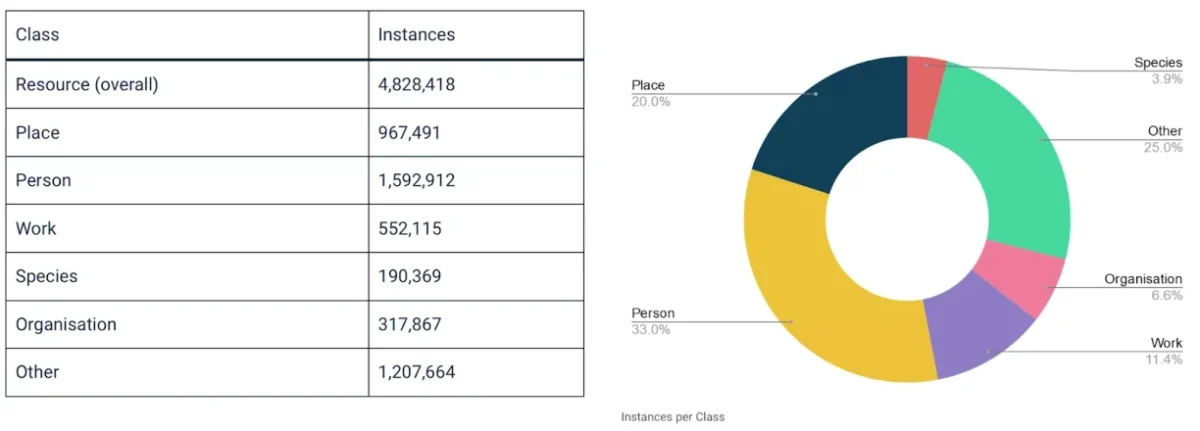
Source: DBpedia
In addition to being used for research and academic purposes, DBpedia also serves as a foundational resource for various applications, including search engines, recommendation systems, and natural language processing tools.
6. Microsoft Satori
Microsoft Satori is a graph developed by Microsoft that powers various applications and services, such as the Bing search engine and the Cortana virtual assistant. Satori aims to provide an understanding of entities, their attributes, and the relationships between them, thereby enhancing search results.

Comments
Your email address will not be published. All fields are required.